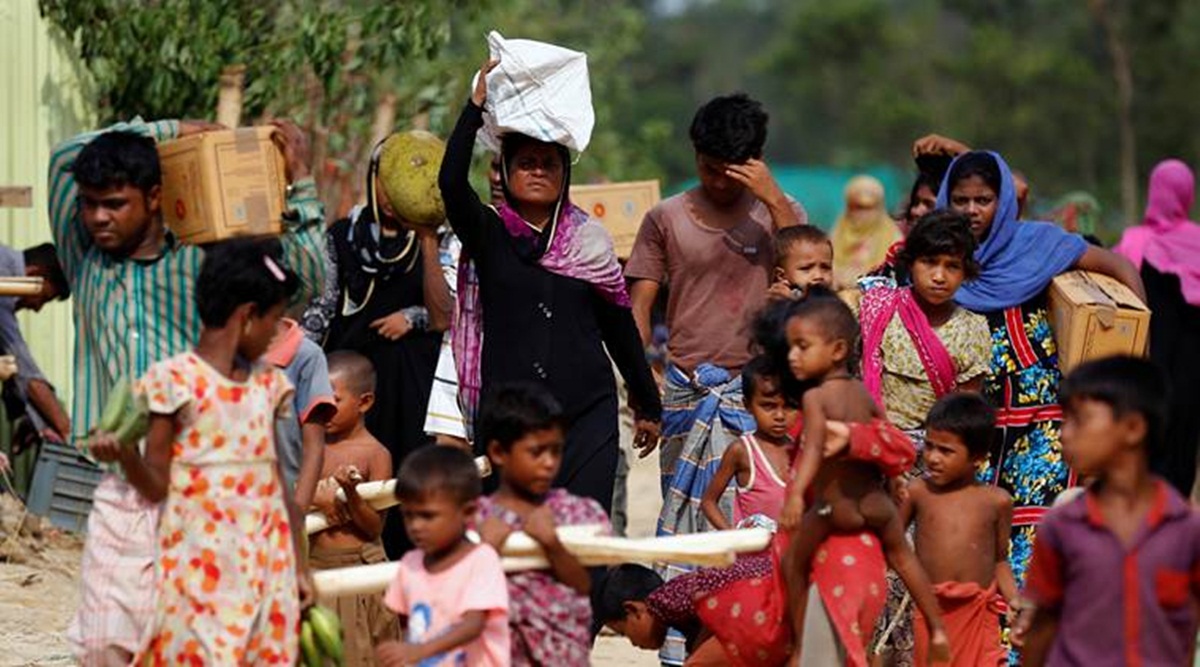
- Home
- India
- World
- Premium
- THE FEDERAL SPECIAL
- Analysis
- States
- Perspective
- Videos
- Sports
- Education
- Entertainment
- Elections
- Features
- Health
- Business
- Series
- In memoriam: Sheikh Mujibur Rahman
- Bishnoi's Men
- NEET TANGLE
- Economy Series
- Earth Day
- Kashmir’s Frozen Turbulence
- India@75
- The legend of Ramjanmabhoomi
- Liberalisation@30
- How to tame a dragon
- Celebrating biodiversity
- Farm Matters
- 50 days of solitude
- Bringing Migrants Home
- Budget 2020
- Jharkhand Votes
- The Federal Investigates
- The Federal Impact
- Vanishing Sand
- Gandhi @ 150
- Andhra Today
- Field report
- Operation Gulmarg
- Pandemic @1 Mn in India
- The Federal Year-End
- The Zero Year
- Science
- Brand studio
- Newsletter
- Elections 2024
- Events
- Home
- IndiaIndia
- World
- Analysis
- StatesStates
- PerspectivePerspective
- VideosVideos
- Sports
- Education
- Entertainment
- ElectionsElections
- Features
- Health
- BusinessBusiness
- Premium
- Loading...
Premium - Events

Crisis in neighbour Myanmar may seem slightly insignificant when compared to challenges like Ukraine and Palestine, but it has long-term consequences for India
Following the road taken by Sri Lanka and Pakistan in accepting big Chinese infrastructure projects that strategically benefit Beijing but leave the host countries with an unacceptable debt burden, Myanmar’s military regime has now waded into a financial crisis it simply cannot manage.
The crisis is getting worse as the country sinks into an endemic civil war caused by the junta’s imposition of military rule by stamping out Myanmar’s fledgling democracy and shattering the nationwide ceasefire with ethnic militant groups.
The internal conflict is forcing the junta to spend precious foreign exchange on expensive military hardware that China and Russia are all too keen to sell but not provide for free.
For India, this is bad news, with another failed state emerging in the country’s critically important eastern neighbourhood. Like Pakistan in the West, Myanmar is not only home to several ethnic insurgencies that big foreign powers are likely to exploit, but also one of the two biggest drug-producing regions — Myanmar’s “Golden Triangle” is always in competition with the “Golden Crescent” of the Af-Pak region to take the top slot in global narcotics production.
Drugs, ethnic rebellions, weapons, and human trafficking have made both the Afghan-Pakistan and Myanmar-Laos-Thailand borderlands two of Asia’s deadliest lingering conflict zones. That they border India should worry Delhi more than what’s up in Ukraine and Palestine.
The Myanmarese military junta has threatened last-ditch measures to halt a runaway trade deficit that is close to $1 billion in the first six months of the 2023-24 fiscal — up around 1,500 per cent on the $66 million during the same period last year.
Yawning trade deficit
During a meeting with over 100 top businesspeople in Yangon last week, Myanmar Commerce Minister Tun Ohn confessed that the country’s trade deficit from April to September had reached close to $1 billion.
Participants told The Federal that Ohn urged them to boost exports and slash imports since the regime had set an export target of $16.5 billion and an import target of $16 billion with total trade volume of $32.5 billion for the remaining half of this fiscal year. “We are concerned about the regime putting more pressure on our business. They can do anything they like to put us in difficulties,” said a top businessperson unwilling to be quoted.
Other local tycoons said that though the regime could place obstacles in their way, it cannot boost exports by supporting domestic production in agriculture, livestock, or other manufacturing sectors.
Ohn revealed that exports were only at 46 per cent of normal capacity, while import volume reached just 53 per cent during the first six months of this fiscal year. He said the drop in exports of rice, broken rice, green gram, sesame, rubber, and garments was caused by falling demand from foreign buyers, confusing exchange rates, and smuggling.
The junta’s Ministry of Commerce only released figures for trade up to the end of August. However, even the available data shows that this fiscal year’s trade deficit is on course to cross the equivalent figures last year.
According to the ministry, the trade deficit in the five months from April to August this year was $677 million. The figure for the same period last year was only $162 million, with the total trade deficit for fiscal 2022-2023 reaching $732 million.
Import curbs amid soaring inflation
“The masses suffer the impact of these trade deficits since they are the end users. The traders just add the extra import and trading costs while selling imported goods,” said economist U Moe.
The concern over import restrictions comes at a time when people in Myanmar are already suffering widespread hardship from soaring commodity prices. The same phenomenon is rampant in Pakistan, Sri Lanka, and even Bangladesh.
Meanwhile, tackling the deficit by increasing exports would take time, said Moe. “Boosting exports cannot be achieved magically within a few months. It takes years of structural reforms,” he said.
The regime had targeted a trade surplus of $1.5 billion in fiscal 2022-2023 but that projection proved out of touch with reality when the year ended in March 2023 with the country totting up an annual trade deficit of $732 million.
The World Bank observed in a report earlier this year that Myanmar’s economic growth will remain “severely diminished” and GDP is expected to increase just 3 per cent in the fiscal year to September. Widespread violence, worsening power shortages, and policy failures will continue to disrupt an economy already crippled by political and social turmoil, the World Bank said in its regional report.
“The business environment is unlikely to improve materially while electricity shortages, logistics disruptions, trade and foreign exchange restrictions, and regulatory uncertainty persist,” it said.
The World Bank further said Myanmar’s economic output will remain well below levels seen in 2019, even as the rest of the East Asian region rebounds from pandemic-era lows.
Long-term consequences for India
Myanmar’s army ousted an elected government in 2021, unleashing chaos, as it sought to crush its opponents. Its crackdown on dissent and ensuing backlash from armed groups has led to a retreat by foreign firms concerned about political risks, sanctions, and damage to their reputation.
The crisis in Myanmar may seem slightly insignificant when compared to other global challenges like Ukraine and now Palestine, but it has long-term consequences for India. First, Beijing’s influence in Myanmar following the coup has risen sharply because the Myanmar junta is depending on China for its political survival. This is of serious concern for India.
The leaders of the Myanmarese junta Tatmadaw are becoming increasingly dependent on China for financial and political support, which surely does worry New Delhi. Myanmar will start accepting the Renminbi as an official settlement currency next year for trade with China.
Second, the civil war and insurgency in Myanmar are detrimental for peace in Northeast India. The influx of refugees from Myanmar is causing tension between the Centre and the state governments of Mizoram and Manipur.
Third, the ongoing conflict in Myanmar undermines India’s Act East Policy and the geostrategic economic projects that form its core. These projects include the India-Myanmar-Thailand Trilateral Highway Project (IMT Highway) and the Kaladan Multi-Modal Transit Transport Project (KMTT).
Besides these challenges, New Delhi’s engagement with the Tatmadaw and India’s tepid response to the democratic and human rights crisis in Myanmar are at odds with its aspirations of being a democratic world leader.
(Subir Bhaumik, a veteran BBC journalist and author, worked for Myanmar's leading media group Mizzima as Senior Editor.)
(The Federal seeks to present views and opinions from all sides of the spectrum. The information, ideas or opinions in the articles are of the author and do not necessarily reflect the views of The Federal.)


